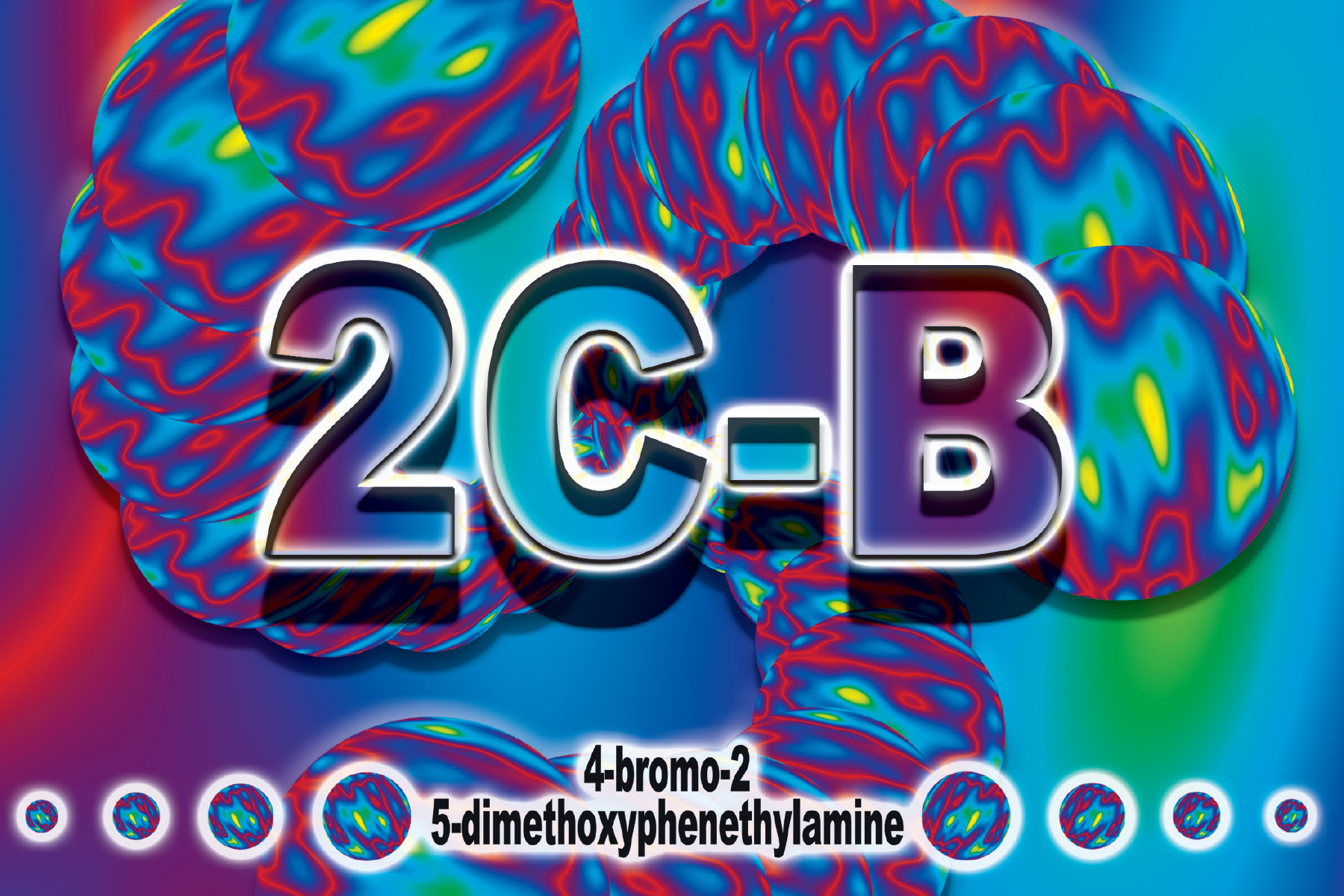
2C-B
Post Date: February 10, 2014
Rachel Clark2023-08-15T10:17:22-07:00
2C-B
What is 2C-B?
- 2C-B is a psychedelic drug first synthesized in 1974 by Dr. Alexander Shulgin. It is one of the better-studied “novel” psychedelics, and is no longer considered to be a research chemical.
- 2C-B is classified as a “phenethylamine,” which is a category of drugs that tends to share properties of both psychedelics and stimulants.
- 2C-B belongs to a family of drugs known as the “2C-x class” (or, more simply, the “2Cs”). These include 2C-I, 2C-E, 2C-T-7, and many others.
- 2Cs are usually sold as powder in baggies or gel caps, but are sometimes pressed into pills resembling ecstasy tablets.
- “Tusi” is not the same as 2C-B, although the name has been causing confusion. “Tusi” refers to a pink powder containing a mixture of substances like MDMA, ketamine, and caffeine. Always test your drugs!
What are the effects?
- 2C-B has both psychedelic and stimulant properties. It tends to be very visual and, like other psychedelics, produces perceptual changes.
- 2C-B is known for its unique “rushing” body high and relatively gentle headspace, which is usually reported to be less psychologically confusing and introspective than other psychedelics.
- 2C-B lasts approximately five to eight hours. Snorting or plugging 2C-B will make it more intense and shorter-acting.
- 2C-I, 2C-E, 2C-T-7, and the other 2Cs are dosed differently than 2C-B, and each has a unique effects profile, duration, and safety profile. See PsychonautWiki.org for detailed information on the 2Cs.
What is a typical dose?
- A threshold dose (one that can just barely be felt) is about 5 mg. An average dose is around 15-25 mg, and a strong dose is 25-45 mg.
- At low doses (5-15 mg), 2C-B tends to cause mild mood enhancement that usually isn’t very visual.
- At higher doses, 2C-B can produce intense visual effects that are similar to (and sometimes more intense than) those of other psychedelics. These may include color enhancement, geometric patterns, and surface warping or breathing. You can see examples at EffectIndex.com.
- 2C-B is typically ingested orally and can take anywhere from 30 minutes to a full two hours to take effect. Due to its tendency to induce nausea, some people prefer to administer 2C-B rectally to avoid first-pass metabolism through the gut.
- Snorting 2C-B is notoriously painful and is often avoided.
Be careful!
- 2C-B is very dose sensitive; a dose increase of just a few milligrams can create a much more intense effect. Try to use volumetric dosing to measure your dose, and start small if you are experimenting for the first time. Do not try to eyeball 2C-B.
- As with other psychedelics (and intense [drug] experiences in general), people who have personal or family histories of mood or psychotic disorders may be at increased risk of psychological upset after taking 2C-B.
- 2C-B can sometimes cause nausea, trembling, chills, or anxiety in some people.
- 2C-B’s characteristic “rushing” body load resembles some stimulants, unlike psychedelics like LSD and mushrooms. Although most people find 2C-B easier to handle than other psychedelics, the potential for a difficult experience still exists, especially with higher doses.
More harm reduction tips
- While there have been no reported deaths from 2C-B, there have been from some of the other 2Cs. Other 2Cs are less studied than 2C-B and fewer clinical studies have been conducted to assess their safety.
- As with all psychedelics, “set” and “setting” are important factors in determining whether someone has a positive or difficult experience. “Set” is a person’s mental state (their thoughts, mood, and expectations), while “setting” is the physical and social environment in which the drug is consumed. Being in a good mental state, with trusted friends in a supportive environment, reduces the risk of having a difficult trip on 2C-B.

